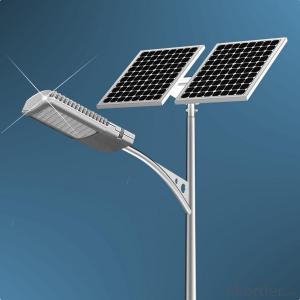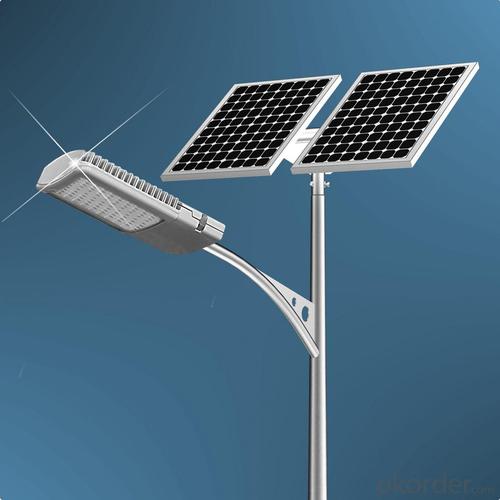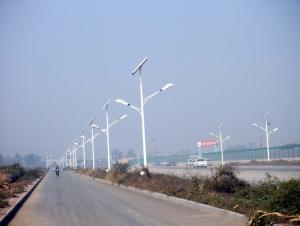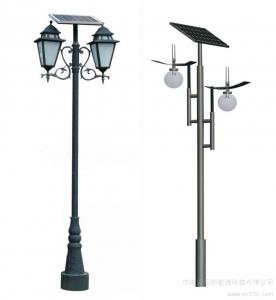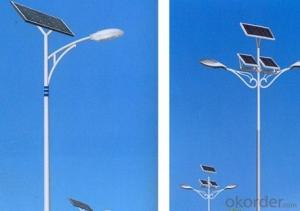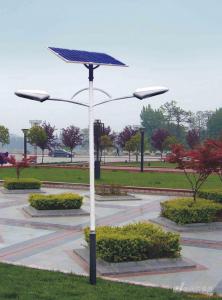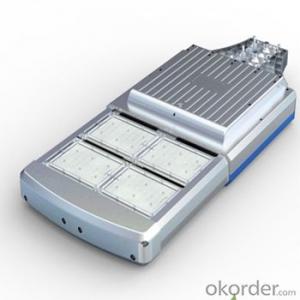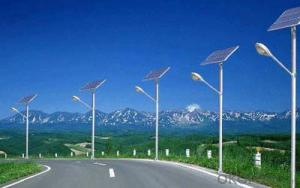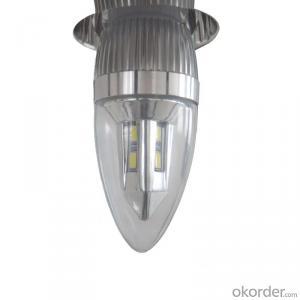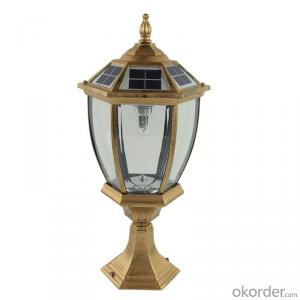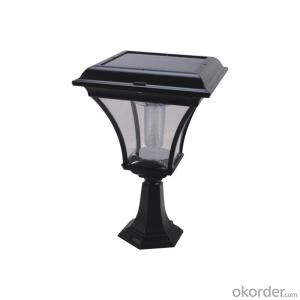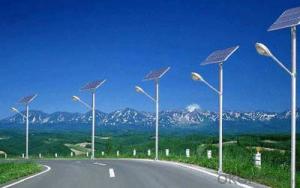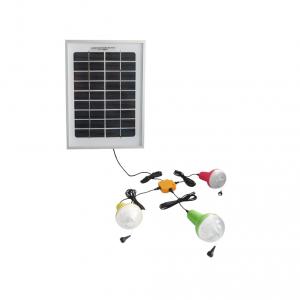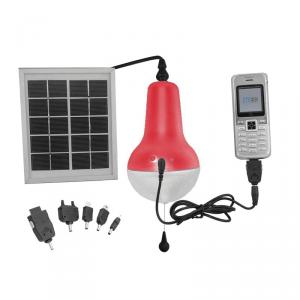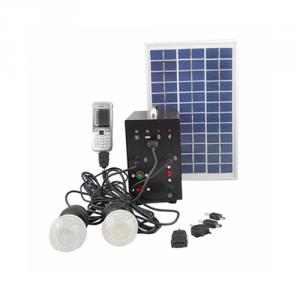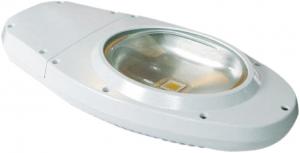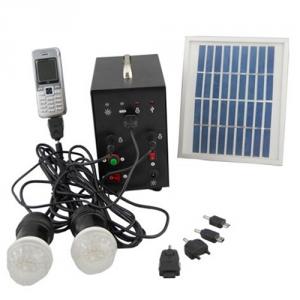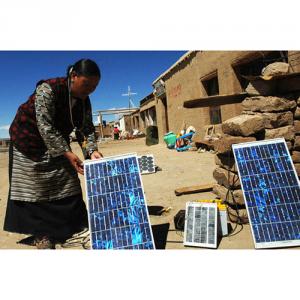Solar Light for Fence Post - Off Grid New Energy 022WD
- Loading Port:
- Shanghai
- Payment Terms:
- TT OR LC
- Min Order Qty:
- 1 watt
- Supply Capability:
- 5000 watt/month
OKorder Service Pledge
OKorder Financial Service
You Might Also Like
1, Product desciption
Inverter circuits designed to produce a variable output voltage range are often used within motor speed controllers.
The DC power for the inverter section can be derived from a normal AC wall outlet or some other source. Control and feedback circuitry is used to adjust the final output of the inverter section which will ultimately determine the speed of the motor operating under its mechanical load.
Motor speed control needs are numerous and include things like: industrial motor driven equipment, electric vehicles, rail transport systems, and power tools. (See related: variable-frequency drive ) Switching states are developed for positive, negative and zero voltages as per the patterns given in the switching Table.
The generated gate pulses are given to each switch in accordance with the developed pattern and thus the output is obtained.
And Powerful source of energy. Without it, there will be no life.
Solar energy is considered as a serious source of energy for many years
of the vast amounts of energy that is made freely available, if harnessed by modern technology.
A magnifying glass can be used to heat up a small amount of water.
The short piece of copper tube is sealed at one end and filled with water.
And magnifying glass is then used to warm up the pipe.
Using more than one magnifying glass will increase the temperature more rapidly.
2, Features of the product
Inverters convert low frequency main AC power to higher frequency for use in induction heating.
To do this, AC power is first rectified to provide DC power. The inverter then changes the DC power to high frequency AC power. Due to the reduction in the number of DC Sources employed, the structure becomes more reliable and the output voltage has higher resolution due to an increase in the number of steps so that the reference sinusoidal voltage can be better achieved.
This configuration has recently become very popular in AC power supply and adjustable speed drive applications. This new inverter can avoid extra clamping diodes or voltage balancing capacitors. There are three kinds of level shifted modulation techniques, namely: 1,High and stable conversion efficienly based on over 4 years professional experience
2 ,High reliability with guaranteed +/-10% output power tolerance
3,Proven materials,tempered front glass,and a sturdy anodized aluminum frame allow modules to operate reliably in multiple mountily configurations
4,Combination of high efficicncy and attractive appearance
The first thing to figure out is the length of road in need of street lights.
This can be a small entrance road only a couple hundred of feet long to miles of streets through an area. Does the area currently have any type of lighting available.
What is the reason for needing street lights in this area
Is the electrical grid already nearby or would you need to call in the power company to bring in electrical lines.
If the electric needs to be brought to the area, how much is this going to cost? Depending on how far the grid electric is from the location of the needed lighting, this can be quite expensive.
How much lighting is needed on the street? Do the lights need to be dark sky compliant.
Do the street lights need to run from dusk to dawn or for only a specified number of hours at night.
Are the street lights able to dim in the middle of the night and still provide enough lighting.
These questions need to be answered before you can decide on how many lights you will need to complete the project.
Historically, there have been concerns about having transformerless electrical systems feed into the public utility grid. The concerns stem from the fact that there is a lack of galvanic isolation between the DC and AC circuits, which could allow the passage of dangerous DC faults to be transmitted to the AC side. Since 2005, the NFPA's NEC allows transformerless (or non-galvanically) inverters. The VDE 0126-1-1 and IEC 6210 also have been amended to allow and define the safety mechanisms needed for such systems. Primarily, residual or ground current detection is used to detect possible fault conditions. Also isolation tests are performed to insure DC to AC separation.
Many solar inverters are designed to be connected to a utility grid, and will not operate when they do not detect the presence of the grid. They contain special circuitry to precisely match the voltage and frequency of the grid.
A charge controller may be used to power DC equipment with solar panels. The charge controller provides a regulated DC output and stores excess energy in a battery as well as monitoring the battery voltage to prevent under/over charging. More expensive units will also perform maximum power point tracking. An inverter can be connected to the output of a charge controller to drive AC loads.
3, Detailed Specification
Data Sheet of High Quality Solar Controller Tracer-1210RN
ModelTracer-1210RN
Rated system voltage12/24V auto work
Rated battery current10A
Rated load current10A
Max.battery voltage32V
Max.PV open circuit voltage100VDC
Max.PV input power12V 130W;24V 260W
Self-consumption<10ma(24v)< span="">
Charge Circuit Voltage<=0.26v< span="">
Discharge Circuit Voltage Drop<=0.15v< span="">
CommunicationTTL232/8 pin RJ45
Temp/compensation-30mV/℃/12V(25℃)
Working temperature-35℃~+55℃
Storage temperature range-35℃~+55℃
4, Product Image
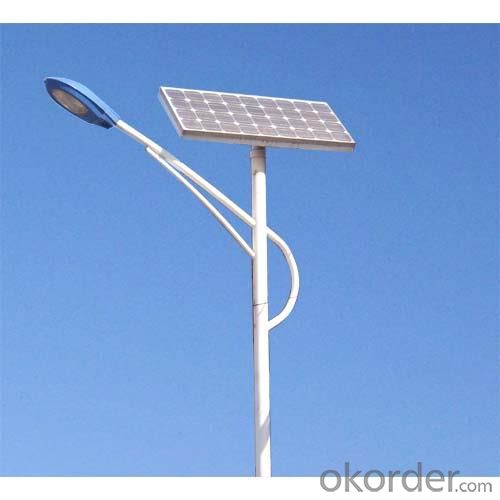
- Q: Are solar lights suitable for outdoor patios and decks?
- Yes, solar lights are suitable for outdoor patios and decks. They are designed to be weather-resistant and can provide sustainable lighting without the need for electricity. Solar lights are easy to install, require minimal maintenance, and can enhance the ambiance of your outdoor space while also increasing safety and security.
- Q: Can solar lights be used for landscaping?
- Yes, solar lights can be used for landscaping. They are a popular choice for illuminating pathways, highlighting garden features, and creating ambient lighting in outdoor spaces. Solar lights harness energy from the sun during the day and use it to power LED bulbs, making them eco-friendly and cost-effective. Additionally, they are easy to install and require minimal maintenance, making them a convenient option for landscaping projects.
- Q: What is the range of motion detection in solar lights?
- The range of motion detection in solar lights can vary depending on the specific model, but typically it is around 120 degrees.
- Q: Can solar lights be used for outdoor markets or food stalls?
- Yes, solar lights can definitely be used for outdoor markets or food stalls. In fact, they are a popular and practical choice for these types of applications. Solar lights are designed to work outdoors and can provide ample lighting for market stalls or food stands, especially during evening hours. They are not only energy-efficient but also cost-effective, as they do not require electricity from the grid to function. This means that they can be easily installed in outdoor locations without the need for complicated wiring or electrical connections. Additionally, solar lights are often equipped with sensors that automatically turn them on at dusk and off at dawn, ensuring that your market or food stall is well-lit throughout the night, without any manual intervention. Overall, solar lights are a reliable and sustainable lighting solution for outdoor markets or food stalls, providing both visibility and energy savings.
- Q: Can solar lights be used for illuminating outdoor dining areas?
- Yes, solar lights can be used to illuminate outdoor dining areas. They are a great eco-friendly and cost-effective option for providing lighting in outdoor spaces. Solar lights use solar panels to convert sunlight into energy, which is then stored in batteries and used to power the lights. They are easy to install and require minimal maintenance, making them ideal for illuminating outdoor dining areas.
- Q: Can solar lights be used in areas with high levels of electromagnetic interference?
- Yes, solar lights can be used in areas with high levels of electromagnetic interference. Solar lights operate independently of the electrical grid and do not require any wired connections, making them less susceptible to electromagnetic interference. The light fixtures are designed to be self-contained and utilize solar panels to convert sunlight into electricity, which is stored in batteries for later use. As a result, they are not affected by external electromagnetic interference, such as from power lines or other electrical devices. Therefore, solar lights can be a reliable and efficient lighting solution even in areas with high levels of electromagnetic interference.
- Q: Can solar lights be used for bicycle path lighting?
- Indeed, solar lights are certainly suitable for illuminating bicycle paths. Not only are they an outstanding choice for energy-efficient and environmentally-friendly lighting, but they also have several advantages. Solar lights operate on sunlight, eliminating the need for electrical wiring or grid connection. This makes installation effortless and cost-effective in the long term. Furthermore, solar lights are equipped with solar panels that convert sunlight into electricity, which is then stored in a rechargeable battery. This stored energy is utilized to power the lights during the nighttime. With advancements in solar technology, modern solar lights offer ample illumination for bicycle paths, ensuring safety and visibility for cyclists. Moreover, solar lights are durable and require minimal maintenance, making them a practical option for outdoor use. Overall, implementing solar lights for bicycle path lighting is a sustainable and efficient solution that benefits both the environment and the path users.
- Q: How do solar lights handle different seasons and sunlight variations?
- Solar lights are designed to be adaptable and efficient in handling different seasons and sunlight variations. During the summer months when there is abundant sunlight, solar lights can fully charge their batteries and provide bright illumination throughout the night. The longer days and intense sunlight allow the solar panels to capture maximum energy, ensuring that the lights have enough power for extended periods. In the winter, when the days are shorter and sunlight is less intense, solar lights may experience reduced charging capacity. However, advancements in solar technology have made solar lights more resilient. They are equipped with high-quality batteries that can store energy efficiently, allowing them to provide illumination even during shorter nights. Additionally, some solar lights have adjustable solar panels that can be angled to maximize sun exposure during low-light conditions. Solar lights also have built-in sensors that detect ambient light levels. This feature enables them to automatically adjust their brightness based on the amount of sunlight available. During the darker winter months, solar lights may automatically dim to conserve energy and ensure longer operation throughout the night. Furthermore, solar lights are typically designed with weather-resistant materials to withstand different seasons' conditions. They can endure rain, snow, and extreme temperatures, ensuring their longevity and functionality all year round. Overall, solar lights are engineered to handle variations in sunlight and different seasons. While they may experience reduced charging capacity during winter, their efficiency and adaptability make them a reliable and sustainable lighting option for outdoor spaces.
- Q: Are there any disadvantages of using solar lights?
- Yes, there are a few disadvantages of using solar lights. Firstly, solar lights are dependent on sunlight, so they may not work efficiently in areas with limited sunlight or during cloudy days. Secondly, the initial cost of installing solar lights can be higher compared to traditional lighting options. Additionally, solar lights have limited brightness levels and may not provide the same level of illumination as other lighting sources. Lastly, solar lights require regular maintenance, including cleaning the solar panels and replacing batteries, which can be time-consuming.
- Q: Can solar lights be used for RV and boat lighting?
- Certainly, solar lights are perfectly suitable for lighting in RVs and boats. They are, in fact, an exceptional choice for these specific applications. Designed to be energy-efficient and self-sustaining, solar lights prove to be the ideal lighting solution for remote locations like RVs and boats. The best part is that they don't require any complicated wiring or electrical connections. Powered solely by sunlight, solar lights come equipped with built-in solar panels that capture and convert solar energy into electricity. This means that installing solar lights in your RV or boat is a breeze, without the need for intricate setups or access to electricity. Moreover, solar lights boast a lengthy lifespan and long-lasting durability, making them perfectly suited for outdoor use and withstanding the vibrations and movements experienced in RVs and boats. Additionally, solar lights offer a wide array of styles and designs, ensuring that you can find ones that perfectly match the aesthetic of your RV or boat. All in all, solar lights present a practical and environmentally friendly lighting option for RVs and boats.
Send your message to us
Solar Light for Fence Post - Off Grid New Energy 022WD
- Loading Port:
- Shanghai
- Payment Terms:
- TT OR LC
- Min Order Qty:
- 1 watt
- Supply Capability:
- 5000 watt/month
OKorder Service Pledge
OKorder Financial Service
Similar products
Hot products
Hot Searches
Related keywords
